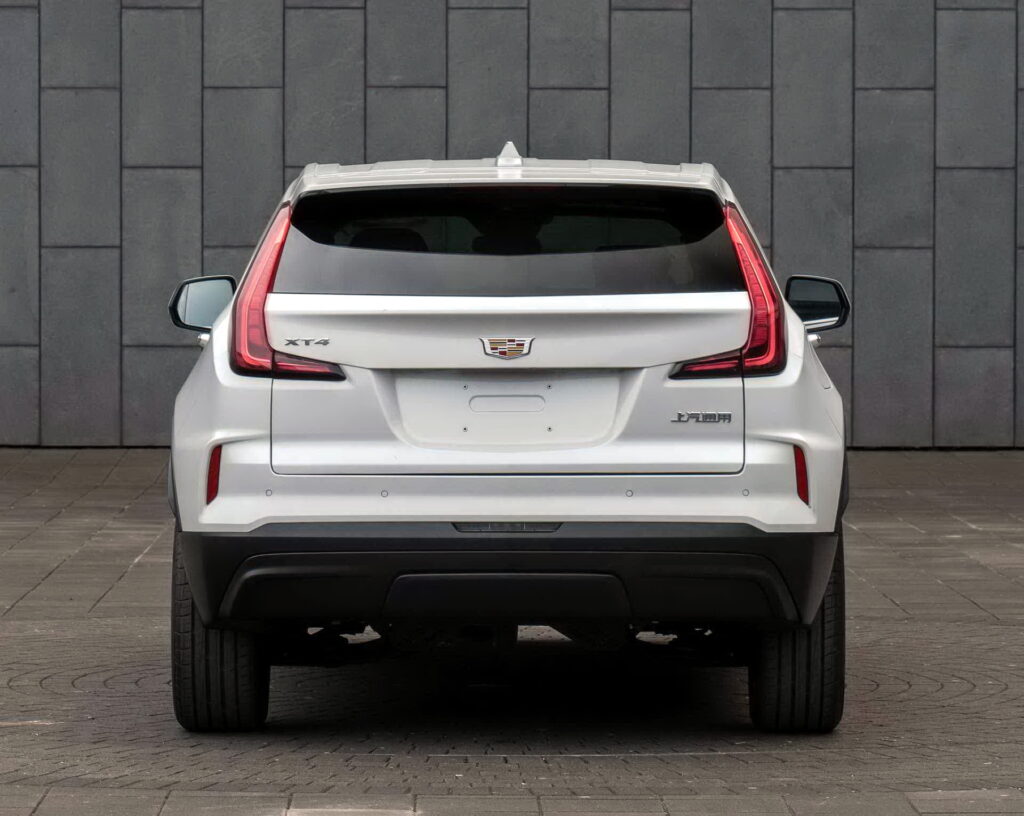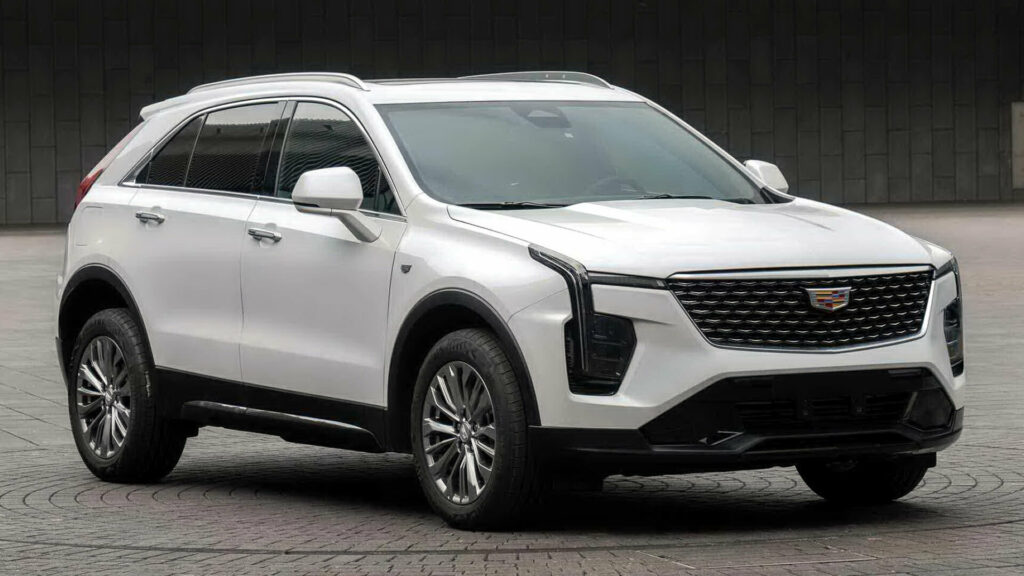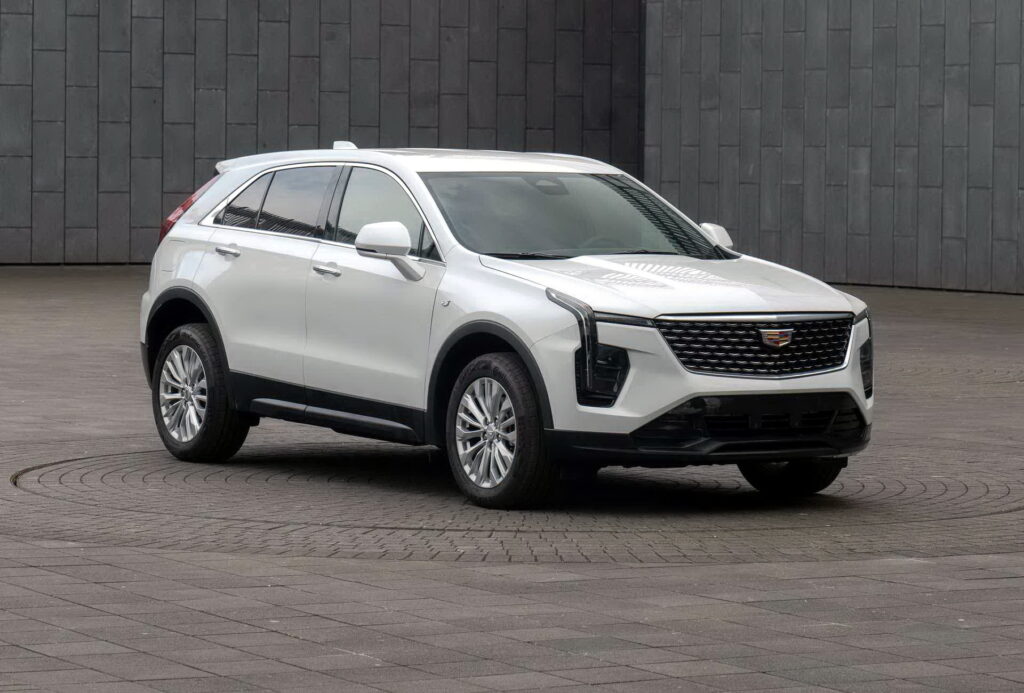The facelifted Cadillac XT4 has been revealed in China by the Ministry of Industry and Information Technology. While the vehicle pictured here is the Chinese specification model, as evidenced by the camouflaged prototypes captured in the U.S., the styling revisions appear to be identical.
Looking instantly recognizable, the crossover receives a light refresh that mainly focuses on the front end. As you can see, the XT4 has been equipped with a new front bumper, revised grilles, and updated lighting units.
The latter are the most noticeable change as the headlights are now located beneath slender LED turn signals. The vertical elements appear relatively untouched and they act as daytime running lights.
Also: Facelifted 2024 Cadillac XT4 Spotted With Lyriq-Style Screen And Split Light Treatment

The rear styling changes are easy to overlook, but there are a handful of minor updates including lightly revised bodywork and new vertical reflectors. The bumper has also been tweaked and the reverse light is now located in the center.
While the latest pictures don’t show the interior, previous spy photos have revealed the XT4 will have a curved display that combines a digital instrument cluster with an infotainment system. The overall design mimics the 33-inch screen found in the Lyriq, but it will presumably be smaller.
Additional changes are limited, but the spec sheet shows that the crossover will be offered with 18- and 20-inch wheels. Documents accompanying the release also indicated the model will continue to be powered by a turbocharged 2.0-liter four-cylinder engine that features mild hybrid technology as well as an output of 233 hp (174 kW / 237 PS) and 258 lb-ft (350 Nm) of torque.
The engine should be connected to a nine-speed automatic transmission, which can be paired to an optional all-wheel drive system. In the current Chinese model, this setup enables the crossover to accelerate from 0-62 mph (0-100 km/h) in as little as 7.6 seconds, before hitting a top speed of 130 mph (210 km/h).

















